Things to do in Loire Valley
Topping the list of things to see and do in the Loire Valley are the châteaux. Some of the best are the Château d'Angers, with its famous Tapestry of the Apocalypse; the Château d'Usse, which inspired the Disney palace; the Château de Langeais; the Château de Chambord, which is the biggest château in the Loire Valley; the Château of Azay-le-Rideau, built on an island in the Indre River; the Château de Cheverny; and the magnificent Château de Chenonceau, possibly the most celebrated of them all.
One of the most delightful châteaux is to be found in the little village of Villandry, though it is not the building so much as the astoundingly creative gardens that draw so many visitors.
The Loire Valley is blessed with plenty of impressive architecture and the cities and villages do not disappoint, even though some of them, such as Tours, were damaged in the war. Amboise is a Renaissance town, once the favourite residence of Leonardo de Vinci, which has preserved its old-world charm despite its enormous popularity with tourists. Blois has compromised fairly well between modernisation and the maintenance of its medieval appeal. Angers and Tours are both good bases from which to explore the Loire Valley region. The city of Orleans, which still celebrates its liberation from the English by Joan of Arc, remains a picturesque and interesting place to stay. The lesser known city of Chartres is worth visiting just for its magnificent Gothic cathedral, which has world-renowned stained-glass windows and is a UNESCO World Heritage Site.
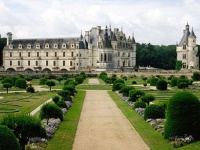
Château de Chenonceau
Only a few miles outside Tours, on the River Cher, the Château de Chenonceau is probably the most celebrated of the many châteaux in the Loire valley. It was used as a mill in th…
Château de Chenonceau
Only a few miles outside Tours, on the River Cher, the Château de Chenonceau is probably the most celebrated of the many châteaux in the Loire valley. It was used as a mill in the Middle Ages and bridges the whole width of the river. It was owned by a succession of powerful noblewomen including Henri II's mistress, Diane de Poiters, the Queen Regent Catherine de Medici, and Louise de Loraine, and is often referred to at the 'Château des Femmes'.
Inside visitors can see a wonderful 200 foot (61m) gallery, Louis XIV's sitting room, and Francois I's bedroom, among other things. The castle boasts rich collections of furniture and art, including an exceptional museum collection of the Old Masters' paintings including works by Murillo, Rubens and Le Tintoret. It also has famously lovely gardens. There is a gourmet restaurant, a self-service restaurant and a tea room (open daily from 3pm to 5pm) at the chateau. A free audio guide is available in 16 languages.
Website www.chenonceau.com
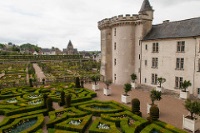
Villandry
Five miles (8km) outside of Tours is the tiny village of Villandry and its wonderful château. The chateau is impressive, with richly furnished rooms and an interesting history. On…
Villandry
Five miles (8km) outside of Tours is the tiny village of Villandry and its wonderful château. The chateau is impressive, with richly furnished rooms and an interesting history. One of the towers dates back to the 12th century and visitors can ascend its uneven stairway to gain wonderful views of the grounds.
Although the building and interiors are worth seeing, the château is best known for its gardens, which are famous world-wide. They are open between February and November. These are not your standard ornamental gardens: between the vine-shaded paths and ornamental box hedges are carrots, cabbages and aubergines carefully arranged in patterns; roses climb gracefully above small herb gardens. The gardens are colourful and range from the extremely stylised (which include mazes and patterns) to wilder sections. There is also a garden shop for enthusiasts.
Villandry is an easy cycle from Tours and, for those that have worked up an appetite, there are some excellent local restaurants. This is one of the most popular and highly-rated chateaux in the Loire Valley and it consistently delights visitors.
Website www.chateauvillandry.com
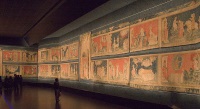
Château d'Angers
A kilometre-long wall, studded with 17 circular towers, surrounds this vast medieval fortress, which was never conquered by any invading force. Visitors can tour most of Château d…
Château d'Angers
A kilometre-long wall, studded with 17 circular towers, surrounds this vast medieval fortress, which was never conquered by any invading force. Visitors can tour most of Château d'Angers, built between the 9th and the 13th century, including the courtyard, prison, ramparts, windmill tower, 15th-century chapel, and royal apartments. The castle also has some lovely terraces and gardens that contrast prettily with its huge and sombre limestone walls.
However, the chateau is now used as a tapestry museum as well, and the overriding reason for coming here is to see the 328-foot (100m) Tapestry of the Apocalypse. Woven between 1375 and 1378 for Duke Réné of Anjou, it is the largest medieval tapestry in the world and takes as its text St John's vision of the Apocalypse, as described in the Book of Revelation.
Visitors may be disappointed to find that although the fortress itself is intriguing and very interesting to explore, there are no furnishings in the castle anymore (apart from those in the tapestry museum) and it is only the structure itself that remains. Guided tours provide insight into its architecture and fascinating history, and audio tours are available as well.
Website www.loirevalleyfrance.net/castles/chateau-angers.html
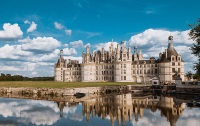
Château de Chambord
Eleven miles (18km) east of Blois, the vast Château de Chambord is the largest château in the Loire Valley. It was commissioned by François I, who wanted to outshine the Holy Ro…
Château de Chambord
Eleven miles (18km) east of Blois, the vast Château de Chambord is the largest château in the Loire Valley. It was commissioned by François I, who wanted to outshine the Holy Roman Emperor Charles V, and the result is a spectacular Renaissance masterpiece with 450 rooms. It was designed by an Italian architect in 1519, but was worked on by French masons.
The outside is essentially French medieval and has massive round towers with conical tops, and an explosion of chimneys, pinnacles and turrets. The details inside, however, are pure Italian: the Great Staircase (attributed by some to da Vinci), panels of coloured marble, niches decorated with shell-like domes, and freestanding columns.
Wandering through, visitors can get a good feel for the contrasting architectural styles, which have combined to create a very decadent, if at times discordant, whole. The château is surrounded by a 20-mile (32km) wall containing a 5,261-hectare (13,000-acre) deer park. It is one of the most impressive castles in the world.
Website www.chambord.org
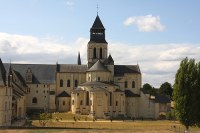
Fontevraud Abbey
Built in the 12th century, Fontevraud Abbey is thought to be the site of the graves of King Henry II of England, his wife Eleanor of Aquitaine, and their son King Richard I; howeve…
Fontevraud Abbey
Built in the 12th century, Fontevraud Abbey is thought to be the site of the graves of King Henry II of England, his wife Eleanor of Aquitaine, and their son King Richard I; however, it is not known exactly where their bodies are interred. The effigies are still on display in the abbey, and are a popular sight for tourists. The abbey has housed a monastery, nunnery, prison, and church over the centuries, and various sections have been rebuilt in Gothic, Classical and Romanesque styles. Apart from the effigies, which are the main attraction, the abbey building is massive and impressive and the old kitchens are worth a visit.
Saumur
Saumur is located at the confluence of the Loire and Thouet rivers in the Loire Valley. The region is known for producing world-renowned wines, and also produces mushrooms in an in…
Saumur
Saumur is located at the confluence of the Loire and Thouet rivers in the Loire Valley. The region is known for producing world-renowned wines, and also produces mushrooms in an interesting underground process viewable to the public. Saumur is home to the Château de Saumur, which was built in the 10th century and passed through the hands of Henry II of England, Philip II of France, King Henri IV (of France and Navarre), and Napoleon Bonaparte. Another interesting attraction is the Museé des Blindes, with more than 850 tanks on display.
The Louis de Grenelle wine cellars are particularly popular with tourists for learning about the wine-making process and the wine of the region and, of course, for tastings. An unusual attraction in Saumur is the Pierre et Lumiere, which displays the miniature carvings of famous Loire chateaux, towns and churches, carved out of tufa stone in natural caves. The Cadre Noir, a riding academy which has been operating for nearly 150 years, is a haven for horse lovers, and they put on remarkable shows and give guided tours of their stables. Saumur is located within easy distance of Paris, Nantes, Angers, Tours, and several other cities, making it an ideal day trip on a city break.
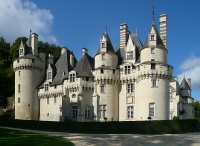
Château d'Ussé
The magnificent Château d'Ussé overlooks the Indre River, and was built by Charles VII in the mid-15th century. The fairytale castle passed through the hands of many nobles, and …
Château d'Ussé
The magnificent Château d'Ussé overlooks the Indre River, and was built by Charles VII in the mid-15th century. The fairytale castle passed through the hands of many nobles, and was said to have inspired Charles Perrault to write the story of Sleeping Beauty. It subsequently inspired Walt Disney in the design of his iconic castle in the Disney logo and at several theme parks. The castle is still a private residence and only parts of the house are open to the public. However, it is well worth a visit as visitors can explore a fair amount of the house, including the king's chamber, kitchens, entrance hall and dungeons, and can also wander the gardens, stables, chapel and cellars.
The interiors are richly decorated, still containing the privately collected furniture, tapestries and art of the noble families that have lived in the chateau over the centuries. Mannequins have been used to exhibit the rich array of costumes in the castle's collection. They are also used to recreate scenes from the Sleeping Beauty story. The Guard Room contains an interesting collection of oriental weaponry; the Renaissance chapel, built in 1521, is beautiful; and the grounds are gorgeously landscaped. There is a ghost story attached to the dungeon tower: apparently the guards used to hear the rustle of a lady's gown as she searched for her lover.
Website www.chateaudusse.fr
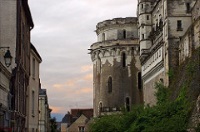
Amboise
On the banks of the Loire, 20 miles (32km) east of Tours, is the Renaissance town of Amboise, a popular holiday destination. Both historic and beautiful, Amboise attracts tourists …
Amboise
On the banks of the Loire, 20 miles (32km) east of Tours, is the Renaissance town of Amboise, a popular holiday destination. Both historic and beautiful, Amboise attracts tourists by the busload, but this doesn't detract from its charm. It has been the favourite residence of Leonardo de Vinci, Charles VIII and more recently Mick Jagger, who owns a nearby château.
Charles VIII's château dominates the town and is an impressive fusion of Renaissance and Gothic styles that is built on a rocky spur separating the valleys of the Loire and the Amasse. The original 15th-century entrance opens onto a terrace with a panoramic view of the river. The castle fell into decline after the revolution and less than half of the original structure still stands. However, many grandly furnished rooms remain, including the Kings' apartments, which are open to holiday visitors.
Leonardo da Vinci was invited to Amboise by François I to encourage the French Renaissance. He made his home at the Clos-Lucé, which is now a museum to his work with 40 models based on his drawings on display, including flying machines and a wooden tank. To the east of Amboise are some children's museums, including the Mini-Châteaux, a two-hectare (five-acre) park with models of the great Loire château. An excellent aquarium is also situated nearby.
Angers
The holiday destination of Angers straddles the Maine River, towards the west of the Loire Valley, and is a popular base from which to explore the local sites and the surrounding c…
Angers
The holiday destination of Angers straddles the Maine River, towards the west of the Loire Valley, and is a popular base from which to explore the local sites and the surrounding châteaux country. Angers is a busy regional centre and university city with an air of sophistication. Like Tours, Angers was badly damaged during World War II. Much of it, however, has been lovingly restored and it remains a pleasant, amiable town with a lively atmosphere. Top Angers holiday attractions include the intriguing museum, Musée Jean Lurçat, which is known for its famous tapestry and the Cathedral with its beautiful 12th-century nave and famous stained-glass windows, also dating from the 12th century.
Angers' most prominent attraction, however, is the Château d'Angers. Built by Louis IX in the 13th century, this limestone fortress is imposing, with lovely terraces and gardens to contrast with its sombre walls. It is thrilling to explore. The most famous attraction inside the chateau is the Tapestry of the Apocalypse, woven in 1375, which is the largest medieval tapestry in the world and has been very well exhibited in the chateau. Allow at least two to three hours to explore.
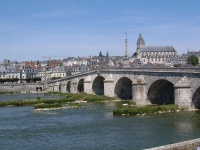
Blois
Much of the historic ambience of medieval Blois remains preserved in its white-washed houses and narrow cobbled alleys, but modernity has impacted quite severely on the noble forme…
Blois
Much of the historic ambience of medieval Blois remains preserved in its white-washed houses and narrow cobbled alleys, but modernity has impacted quite severely on the noble former seat of the dukes of Orléans. Tourists still flock to Blois on holiday to visit the magnificent chateau, now encircled by a traffic-laden highway, but none the less spectacular for this infringement. This beautiful castle witnessed the murder of the Duc De Guise by Henri III, and is renowned for its awesome 13th-century hall.
The interiors of the chateaux are as impressive as the exterior and visitors will be excited by the stunning decorations and furnishings, including royal chambers that feel perfectly authentic. Those excited by chateaux can make excursions from Blois to some other gems in the nearby countryside, including the well-known Chateau de Chambord. The Maison de la Magie next door to the chateau is a truly magical experience for kids and the perfect attraction for a rainy day. Another great attraction worth visiting in Blois is the Basilique Notre-dame de la Trinite, an imposing cathedral with beautiful grounds. Visitors can climb the bell tower for some lovely views of the area.
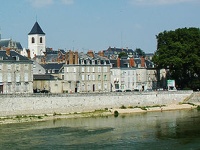
Orléans
There was a time when Orleans was the second most important city in France after Paris; today it is a modest and attractive city well worth a visit to explore its cobbled streets. …
Orléans
There was a time when Orleans was the second most important city in France after Paris; today it is a modest and attractive city well worth a visit to explore its cobbled streets. Orléans' long history stretches to a time before the Romans, but its most famous event was Joan of Arc's deliverance of the city from the English in 1429. The occasion is still commemorated most fervently with Joan of Arc Day, celebrated each year on the 8th of May, when Orléans makes merry with lively street parades in medieval style.
The city's chief attractions include the magnificent neo-Gothic Orléans Cathedral, Cathedrale Ste-Croix, which is truly magnificent and mustn't be missed, and the House of Joan of Arc, which is a reproduction of a house she stayed in while in the city, and features a timeline of her life and achievements. There is also the Orleans Musee des Beaux-Arts to be explored, and the ornately decorated Hotel de Ville. Visitors can rent bikes in Orleans and this is a lovely way to get around in the city; a glorious cycle path that traverses the Loire Valley region passes through Orleans.
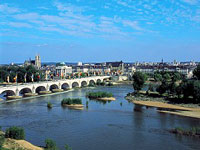
Tours
Located at the junction of the Loire and the Cher Rivers, the holiday destination of Tours is a great base for exploring the valley. The town was badly bombed during the last war a…
Tours
Located at the junction of the Loire and the Cher Rivers, the holiday destination of Tours is a great base for exploring the valley. The town was badly bombed during the last war and many buildings were replaced with ugly apartment blocks. Tours is, however, surrounded by magnificent châteaux and is a fun place to spend the evenings; the streets and bars are filled with locals and tourists and the huge student population ensures that the nighlife buzzes almost every night of the year.
Within the city the cathedral is worth a visit while on holiday. Its flamboyant Gothic façade is flanked by towers dating from the 12th century, inside are some glorious 13th-century stained-glass windows and the handsome 16th-century tomb of Charles VIII and Anne de Bretagne's two children. There is also a fine provincial museum in Tours, in the Palais des Archevêques, with a number of Old Masters works' including some by Degas, Delacroix, Rembrandt, and Boucher. It is a pleasant city to walk around (the old town especially) and there are a number of pretty pathways and parks to explore. It is also fun to cycle along the river Loire and this is a good way to orientate oneself in the city.
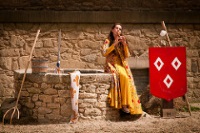
Puy du Fou
Puy du Fou is a historical theme park in western France that attracts more than 1.5 million visitors a year, making it one of the most popular paid attractions in the country. The …
Puy du Fou
Puy du Fou is a historical theme park in western France that attracts more than 1.5 million visitors a year, making it one of the most popular paid attractions in the country. The experience is akin to being on a giant interactive movie set as different historical scenes are played out with considerable exuberance by a large cast of actors against very realistic and impressive sets. There are five thrilling attractions, or perhaps more accurately, performances, including The Vikings and Richelieu's Musketeers, each lasting around 40 minutes.
In the evening during peak season, the Cinescene historical extravaganza is held on reputedly the largest stage in the world, with more than 1,000 actors, hundreds of horses and great volleys of fireworks. The children especially will be spellbound but adults should also greatly enjoy it. The park is set in gorgeous woodlands, and boasts about 25 restaurants, three hotels and plenty of other amenities to ensure a comfortable visit. Performances are in French and English-language translation headsets should be reserved in advance if required.
Website www.puydufou.com



